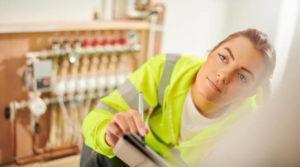To-Do List of Pipefitters
Plumbing is installed or repaired by pipefitters, who fabricate piping and other components, assemble systems, and check that they are functioning properly and not leaking. What are the duties of a plumber?
Plumbing systems, heating, and cooling pipes, marine piping systems, and other systems are all possible jobs for pipefitters.

They have other duties in addition to the manual labor involved in pipe fitting, such as:
1. Examining and maintaining pipelines leading to associated equipment, such as radiators and HVAC units
2. Giving estimates for the price of the labor and parts
3. Making suggestions for critical plumbing system upgrades or repairs
4. Consulting clients or customers to ascertain their plumbing needs
The pipefitter will use various tools and equipment to measure and mark the tools by predetermined standards and rules when they install and repair the pipe systems.
During installation, the pipes will be securely fastened to the walls and fixtures utilizing clamps, brackets, and other welding equipment components.
Why Become a Pipefitter?
Welders installing pipe systems and fixtures and performing regular maintenance are pipefitters.
They will look over a work area to check for potential harm or dangers that might influence future pipe systems.
After the inspection, they will remove any obstacles, review the drawings, and plan where to construct the pipe systems.
Qualifications and Skills for Pipefitters
To adapt piping systems to a customer’s needs, pipe fitters must have welding skills.
They must know about hangers, clamps, and all other pipe system components. Additional necessary certifications and abilities for pipefitters include:
1. Customer service abilities, as pipe fitters frequently interact with clients or consumers.
2. Technical expertise, including math and science skills, to do their duties accurately
3. Physical attributes as pipe fitters must be able to squeeze into small spaces and work in a physically demanding profession.